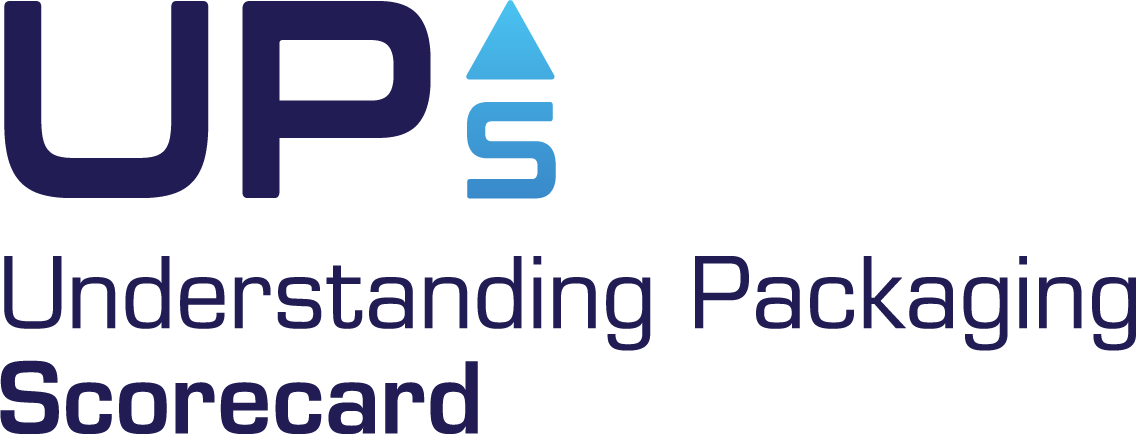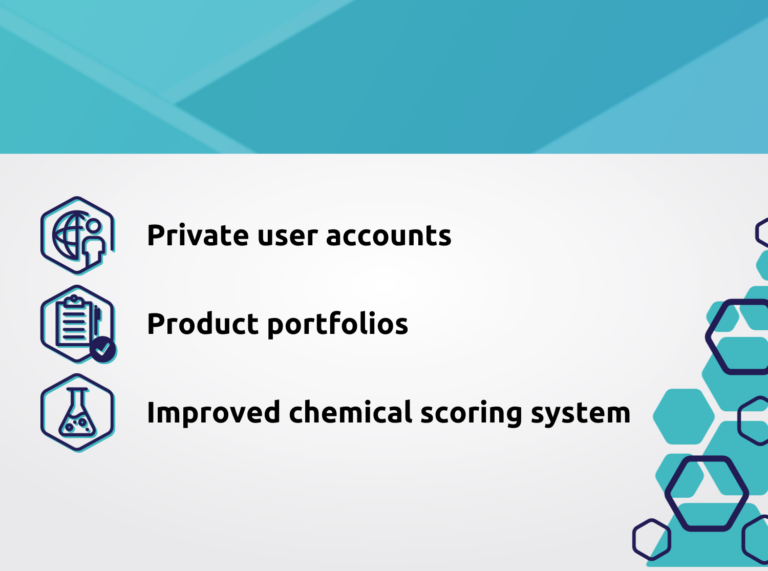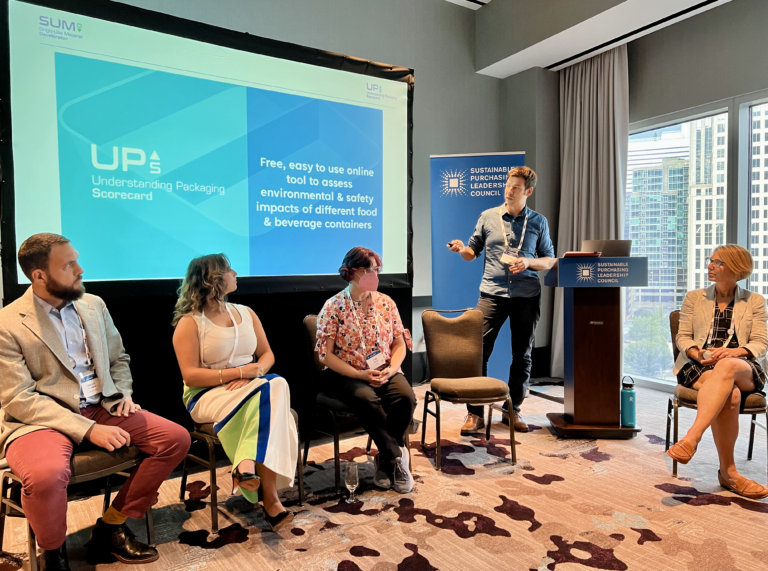Everyone is speaking about sustainable packaging these days. Depending on the interpretation, however, each person can understand it to mean something different. All these different views come in addition to current complications such as the (lack of) available sustainable packaging options or the (partial) lack of compatibility of sustainable packaging with existing distribution and recovery systems. This can make the path to implementing sustainable packaging a challenge, and this is where the UP Scorecard can help to shed light on the various issues and unknowns as well as provide guidance to stakeholders in the food service industry.
In this series of interviews with food service industry practitioners, we explore where the opportunities and challenges lie on the path to sustainable food packaging from a practical perspective and how the UP Scorecard can help on this journey.
Our first interview in this new series is with Dörte Bachmann, Head of Sustainability at SV Group. SV Group is a leading food service and hotel management group based in Switzerland. In addition to her role at SV Group, Dörte is also a member of the Single-Use Material Decelerator (SUM’D), the multi-stakeholder group behind the UP Scorecard.
Dörte, sustainability is a very broad field that encompasses many different aspects. Which of these aspects is your organization currently focusing on improving? What role does sustainable food packaging play in this?
At SV Group, we follow a very comprehensive sustainability approach. In line with a science-based concept called “planetary health diet”, we focus especially on improving our plant-based offer to support climate-friendly and healthy diets. In addition, we are promoting sustainable production by purchasing food and beverages from e.g. organic, animal friendly, or fair trade conditions. Finally, we also focus on reducing food waste and single-use packaging. Although we mainly use reusable dishes for our main business, we see an increasing demand for take away food and beverages in our restaurants and, thus, the usage of single-use packaging has increased in the last couple of years. Moreover, new solutions such as food delivery or our smart fridge offers currently require single-use packaging due to a lack of feasible reusable alternatives. Therefore, we are constantly looking for sustainable food packaging options.
Where do you see the biggest challenges to achieve more sustainable food packaging for the sector? What about in your specific context?
There are several challenges for implementing sustainable food packaging. We often face these three challenges:
- Missing knowledge or transparency: There are plenty of food packaging alternatives on the market, often advertised with being very sustainable. However, alleged sustainable packaging is not necessarily more sustainable than currently used materials. Often, it is not clearly explained why new packaging materials or solutions are supposed to be more sustainable than other materials. Furthermore, replacing one single-use material with another single-use material doesn’t contribute to reducing resource usage, but is just shifting the problem somewhere else. We see an urgent need for more transparency on the environmental impact of different types of food packaging. In addition, some materials used in food packaging are more emotionally charged than others according to the perception of consumers (e.g. everything made out of plastic seems bad irrespective of its actual impact, while bio-plastics is perceived as harmless).
- Behavioral change: Reusable dishes are a packaging option that can have a big positive impact for human health and the environment compared to single-use packaging solutions. However, they often are less convenient than single-use options and require changes in our behavior such as bringing a reusable cup or container back to the restaurant. In our experiences, still too few people are willing to make a contribution by changing their behavior to reduce the environmental impact of packaging.
- Increasing demand for delivery: We see an increasing demand for food delivery offers in the last couple of years and especially during the pandemic. This goes hand in hand with a higher demand for packaging. Unfortunately, suitable options for delivery services that also take sustainable packaging into consideration are still lacking, especially for home delivery. While, for instance, our own office delivery solution in the Zurich area works already quite well with reusable containers.
What are some key targets or next steps you have for improving the sustainability of the packaging your organization uses?
In the last few years, we have worked on implementing reusable take away packaging such as reCIRCLE in many of our restaurants. In the future, we want to expand the offer of reusable take away options and implement more sustainable single-use options in cases where single-use materials are unavoidable. For making the right decision, we want to consider the recommendations provided by the UP Scorecard.
How did you learn about the UP Scorecard and what interested you in the approach it takes?
We have been part of the project right from the beginning. Together with a very motivated group of food services providers and scientists, we have been working on the development of the UP Scorecard to serve as a very useful decision-making tool for several stakeholders in food service. The science-based and collaborative approach has been convincing from the beginning.
Which UP Scorecard results surprise and/or challenge you the most?
I am still surprised that reusable options have a worse climate score compared to single-use options even after multiple uses. However, as the overall sustainability score for reusable options is always better than for single-use options, it shows that we need to look at several impact categories (and not just at the climate score). Often it has not been possible for us to easily assess several impact categories, and this is where it is helpful that the UP Scorecard provides such a holistic view.
Is there already a particular application where the UP Scorecard could support you?
We have recently used the UP Scorecard to raise awareness of the impact of different packaging options when we were in touch with our clients and guests. In the future, we will use the UP Scorecard more often to compare different packaging options to select the best ones for our restaurants.
What additional functions, services, information, etc. would you like to see in the UP Scorecard so that it can better support your organization on its journey to more sustainable food packaging?
It would be useful to do an assessment of the whole packaging assortment currently in use in our restaurants. That could help to discover urgent areas of action for improvement. Comparing an individual “restaurant score” or “packaging footprint” with an average score or benchmark could also help boost our improvement.
What lessons have you and your organization learned so far about making food packaging more sustainable?
As already mentioned, I think we have learned that just replacing one single-use material by another one does not solve the packaging problem and the exploitation of resources. In addition, we must always think about what behavioral changes are necessary to successfully implement sustainable packaging options. Finally, we need to consider several impact categories to make sustainable decisions, not only in terms of food packaging, but also in regard to sustainable food system transformation.
Looking ahead, what are you most excited about?
I am excited that the UP Scorecard provides so much transparency about food packaging impacts, and I am sure it will become the reference for making science-based and sustainable decisions on improving food packaging.








